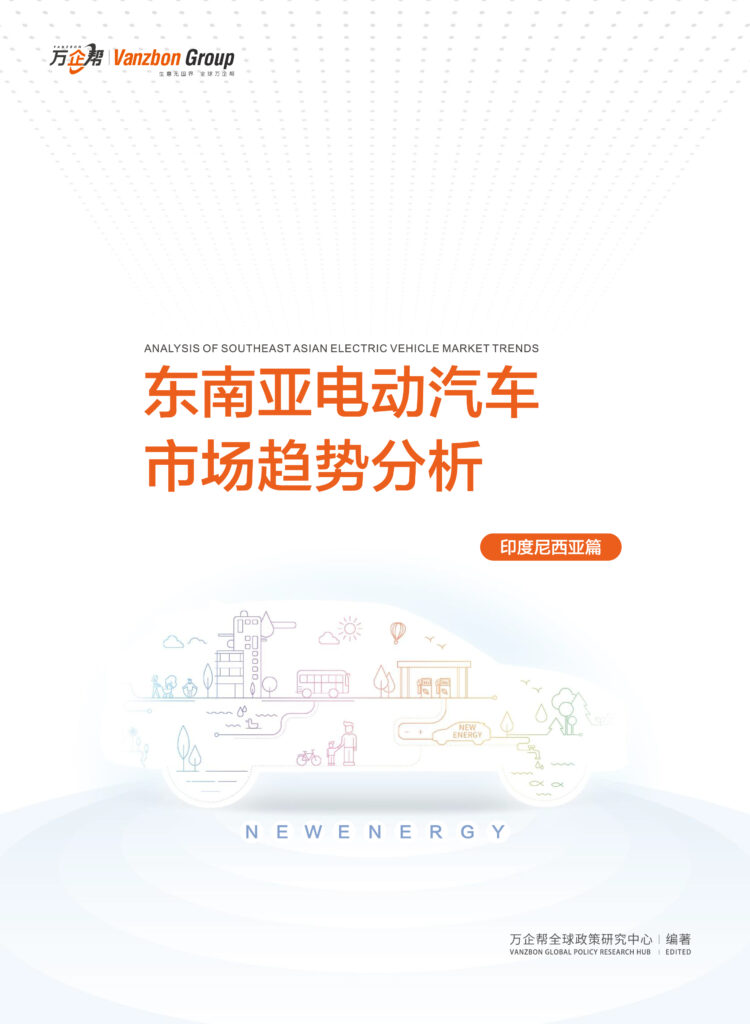With the deepening development of global economic integration, more and more companies are turning their attention to the Japanese market, which is full of opportunities. Setting up a branch in Japan is not only an important step in the internationalization strategy of enterprises, but also a key measure to deepen the Japanese market and enhance brand influence. As the world’s third largest economy, Japan has a mature business environment and a huge consumer market, providing companies with broad development space. However, while deepening into the Japanese market, companies also face unique challenges and risks.
In this land of opportunities and challenges, it is particularly important to formulate a comprehensive emergency plan. As a core component of the enterprise risk management system, the emergency plan is an important tool for enterprises to deal with emergencies, reduce losses, and ensure continuous operation. Especially in Japan, a country with frequent natural disasters and strict business rules, a thorough emergency plan may be the key for enterprises to survive in crises or even break through adversity.
An effective emergency plan can not only help companies respond quickly to various emergencies, but also enhance employees’ crisis awareness and improve the resilience of the entire organization. More importantly, in a social and cultural context like Japan, which pays attention to details and prevention, having a complete emergency mechanism is also an important factor in winning customer trust and establishing a good corporate image. Therefore, for every company that sets up a branch in Japan or intends to enter the Japanese market, formulating an emergency plan that conforms to local characteristics is not only a responsibility, but also a strategic investment.
This article will explore in depth the formulation methods, key elements and implementation strategies of emergency plans for Japanese branches, and provide comprehensive and practical guidance for enterprises to deal with various risks in the Japanese market. Through systematic risk analysis and plan design, we aim to help enterprises gain a firm foothold in the Japanese market and achieve long-term and stable development.
Overview of Japan-specific risk factors
As a unique market environment, Japan has many unique risk factors that have a significant impact on companies operating in Japan. Understanding and preparing for these risks is critical to the successful operation of companies in Japan.
First, natural disasters are one of the most significant risks facing Japan. Japan is located in an earthquake-prone zone and is threatened by earthquakes all year round. For example, the Great East Japan Earthquake in 2011 had a huge impact on the economy. In addition to earthquakes, typhoons and tsunamis are also natural disasters that Japan frequently faces. These disasters not only directly affect the physical assets of enterprises, but may also lead to chain reactions such as supply chain disruptions and production stagnation.
Secondly, Japan faces severe social risks, the most prominent of which are the aging population and labor shortage. Japan is one of the countries with the highest aging population in the world, which has led to a continuous tightening of the labor market. For companies, this means that recruitment is more difficult and labor costs are rising, and it also brings about changes in the market demand structure. Companies need to adjust their human resource strategies and market positioning to adapt to this long-term trend.
Third, economic risk is also an important feature of the Japanese market. Frequent fluctuations in the yen exchange rate may have a significant impact on import and export companies. In addition, Japan has long faced deflationary pressure, which has made price competition more intense and squeezed profit margins. Companies need to develop flexible financial strategies and pay close attention to the monetary policy trends of the Bank of Japan.
Finally, political and legal risks cannot be ignored. The Japanese government’s policies change frequently, especially in the areas of economic stimulus and environmental protection. At the same time, Japan’s business regulations are very strict, especially in labor laws, consumer protection, data privacy, etc. Enterprises need to invest a lot of resources to ensure compliance operations and respond to challenges brought about by policy changes in a timely manner.
These risk factors are intertwined and together constitute a unique risk environment in the Japanese market. When formulating emergency plans, companies need to take these factors into full consideration and formulate targeted response strategies based on their own characteristics. Only in this way can they gain a long-term foothold in the Japanese market and achieve sustainable development.
Enterprise Characteristics Analysis and Customization of Emergency Plans
When formulating the emergency plan for the Japanese branch, we must fully consider the characteristics of the enterprise, including industry attributes, scale and degree of localization. These factors directly affect the specific risk types faced by the enterprise and the effectiveness of the response strategy. By deeply analyzing these characteristics, we can tailor a more accurate and practical emergency plan for the enterprise.
First, there are significant differences in the special risks faced by different industries. Taking the manufacturing industry as an example, Japanese manufacturing companies usually face risks such as interruptions in the supply of raw materials, production equipment failures, and product quality problems. Especially in a market like Japan, which has extremely high requirements for product quality, even minor quality problems may lead to a serious crisis of trust. Therefore, the emergency plan for the manufacturing industry should focus on supply chain management, equipment maintenance, and quality control systems.
In contrast, service companies may be more likely to encounter risks such as customer complaints, reduced service quality, or damaged brand image. In Japan, a service-oriented society, customer experience is particularly important. The emergency response plans of service companies need to pay special attention to customer relationship management, crisis public relations, and continuous optimization of service standards.
For the IT industry, risks such as data security, system failures, and lagging technological innovation are more prominent. In view of Japan’s strict personal information protection laws, IT companies must strengthen data leakage prevention and response measures in emergency plans, and establish a sound system backup and recovery mechanism.
Secondly, the impact of enterprise size on emergency response plans cannot be ignored. Large enterprises usually have more resources to establish a comprehensive risk management system, but they also face more complex organizational structures and higher social expectations. Therefore, the emergency response plans of large enterprises need to be more detailed and systematic, including detailed department coordination mechanisms and multi-level decision-making processes.
Relatively speaking, although SMEs have limited resources, their decision-making chain is shorter, so they can respond to crises more flexibly and quickly. SMEs’ emergency plans should focus on efficient use of resources, establish concise and effective emergency response processes, and make full use of external support networks.
Finally, the degree of localization has a profound impact on risk assessment. Highly localized companies usually have a better understanding of Japan’s business environment and cultural habits, and can more accurately identify potential risks and formulate response strategies that are in line with local realities. The emergency plans of these companies are often closer to Japan’s social expectations and regulatory requirements.
On the contrary, companies with a low degree of localization may face challenges in understanding and responding to Japan-specific risks. The emergency response plans of such companies need to place special emphasis on the impact of cultural differences, strengthen communication mechanisms with local stakeholders, and build the ability to learn and adapt quickly.
In general, an effective emergency plan for a Japanese branch should be the result of in-depth customization based on the characteristics of the enterprise. It should not only take into account the characteristics of the industry, the scale of the enterprise and the degree of localization, but also be consistent with Japan’s social culture and legal environment. Only in this way can we ensure that the emergency plan can play the greatest role in actual crises and help enterprises achieve long-term and stable development in the Japanese market.
Core elements of emergency plans
Risk identification and assessment are the basis of emergency plans. The Japanese branch needs to fully identify the risks it may face, including natural disasters, economic fluctuations, policy changes, etc. It is necessary to fully consider the risk factors unique to Japan, such as the high incidence of natural disasters such as earthquakes and typhoons, and social risks such as labor shortages caused by an aging population. Through regular risk assessments, classification and priority ranking of various risks, it will help the company to formulate more targeted response strategies.
The emergency organizational structure and the allocation of responsibilities are crucial for responding to emergencies quickly and effectively. The Japanese branch should establish a clear emergency management system to clarify the responsibilities and powers of personnel at all levels in emergency situations. Considering the characteristics of Japanese companies, the emergency organizational structure should not only reflect the collective decision-making culture of Japanese companies, but also ensure the efficiency of the decision-making chain. At the same time, it is necessary to pay attention to maintaining good communication and coordination with the head office’s emergency system to ensure smooth cross-border emergency response.
The early warning and response mechanism is the core of the emergency plan. The Japanese branch needs to establish a sensitive risk early warning system that can capture early signs of potential crises in a timely manner. This includes paying close attention to various early warning information issued by the Japanese government, such as earthquake warnings and typhoon forecasts. At the same time, a detailed response process should be formulated to clarify the response measures under different levels of alerts. Considering the high degree of informatization in Japanese society, advanced communication technologies and social media platforms can be fully utilized to ensure the rapid dissemination of early warning information and the timeliness of response.
Resource allocation and management are particularly important in emergency situations. The Japanese branch needs to prepare necessary emergency supplies and equipment in advance, such as first aid supplies and backup power supplies. Considering Japan’s geographical characteristics and possible natural disasters, sufficient food and drinking water should be stored. In addition, a flexible fund allocation mechanism should be established to cope with sudden economic risks. The allocation of human resources is also key. It is necessary to ensure that there are backup personnel for key positions and to reasonably arrange employees’ emergency work time in consideration of Japan’s strict labor laws.
Stakeholder communication strategies are essential to maintaining a company’s reputation and reducing the negative impact of a crisis. Japanese society places great emphasis on information transparency and corporate social responsibility, so branches need to develop detailed crisis communication plans. This includes communication strategies with employees, customers, suppliers, government departments, and the media. Pay special attention to the characteristics of Japanese business culture, such as etiquette and euphemisms. Be cautious and sincere in crisis communication to avoid unnecessary misunderstandings. At the same time, prepare statement templates in Japanese and English to meet the communication needs of different scenarios.
By carefully designing and implementing these core elements, the Japanese branch can greatly improve its ability to respond to various emergencies, ensure that the company’s interests are maintained in crises, and achieve sustainable and stable development in Japan’s unique market environment.
Specific emergency plan template
1.Natural Disaster Response
Earthquake Emergency Plan:
As Japan is a country prone to earthquakes, companies must develop a comprehensive earthquake emergency plan. First, establish an earthquake early warning system that connects to the Japan Meteorological Agency’s emergency earthquake warning system. Second, designate safe areas and evacuation routes, and post clear evacuation maps in the office. Conduct earthquake drills regularly to ensure that all employees are familiar with the response process. Stock up on necessary emergency supplies, such as food, drinking water, and first aid kits. Establish an employee safety confirmation mechanism, such as using the disaster message phone “171” service. Finally, develop a business continuity plan, including data backup and remote work solutions.
Typhoon emergency plan:
Facing the threat of typhoons, companies should pay close attention to typhoon warnings issued by the Japan Meteorological Agency. Reinforce doors and windows in advance, clean drainage systems, and prevent water accumulation and leakage. Decide whether to stop work or leave work early based on the typhoon level to ensure employee safety. Establish a remote office mechanism to ensure the continued operation of key businesses. Prepare emergency power generation equipment to deal with possible power outages. Develop communication plans with customers and suppliers to promptly inform the company of the status and service adjustments. After the typhoon, quickly organize safety inspections, assess losses, and carry out restoration work.
Tsunami Emergency Plan:
For companies in coastal areas, tsunami risks cannot be ignored. First, familiarize yourself with the local tsunami warning system and evacuation routes. Mark the altitude and the nearest high ground in a conspicuous place in the office. Conduct tsunami evacuation drills regularly to improve employees’ emergency awareness. Prepare a portable emergency kit containing necessities such as food, drinking water, and flashlights. Establish a liaison mechanism with local disaster prevention departments to obtain tsunami warnings in a timely manner. Develop a remote work plan to ensure that key businesses can still operate in an emergency.
2.Business risk response
Financial Crisis Contingency Plan:
Financial crises may be triggered by a variety of factors, such as exchange rate fluctuations and market shrinkage. Companies should establish a financial risk early warning system and regularly monitor key financial indicators. Develop cash flow management strategies, including accounts receivable management and inventory control. Establish good relationships with local Japanese banks to ensure smooth financing channels. Consider diversified financing methods, such as issuing corporate bonds or seeking venture capital. Develop a cost control plan, including non-essential expenditure reduction and personnel optimization plans. Establish a communication mechanism with shareholders and creditors and disclose the company’s financial status in a timely manner. If necessary, consider seeking the help of professional financial advisors to develop debt restructuring or asset sales plans.
Information security incident emergency plan:
Given Japan’s strict personal information protection laws, information security is of utmost importance. First, establish a comprehensive information security management system, including access control, encryption measures, etc. Designate an information security emergency response team and clarify the division of responsibilities. Develop a detailed incident reporting and escalation process. Establish a data backup and recovery mechanism and test its effectiveness regularly. Prepare a public relations statement template to respond to possible media inquiries. Develop a user notification plan to ensure that affected customers are notified in a timely and compliant manner in the event of a data breach. Consider purchasing cybersecurity insurance to reduce potential losses. Conduct regular security audits and employee training to improve overall security awareness.
Supply Chain Disruption Contingency Plan:
Japan’s geographical location and natural disaster risks make supply chain disruptions a common problem. Companies should establish a supplier diversification strategy to avoid over-reliance on a single supplier. Establish strategic partnerships with key suppliers and jointly develop emergency plans. Establish an inventory early warning system to ensure that there is sufficient safety inventory of key raw materials or products. Consider establishing a localized supply chain to reduce reliance on international logistics. Develop alternative transportation solutions, such as flexible switching between air and sea transportation. Establish a communication mechanism with customers to promptly inform them of possible supply delays. Consider using supply chain financial tools, such as order financing, to maintain supply chain stability. Regularly assess supply chain risks and update response strategies.
3.Response to human resource risks
Contingency plan for core talent loss:
In Japan’s competitive job market, retaining core talent is crucial. First, establish a talent risk assessment system to regularly assess the risk of turnover of key employees. Develop competitive compensation plans and career development plans to improve employee loyalty. Establish a knowledge management system to reduce the impact of individual turnover on the company. Develop a successor plan to train at least one candidate for each key position. Establish an exit interview mechanism to understand the reasons for resignation and adjust talent strategies in a timely manner. Consider setting up long-term incentive plans, such as equity incentives, to bind the interests of core employees. Strengthen team building, cultivate a strong corporate culture, and improve employees’ sense of belonging.
Labor Dispute Contingency Plan:
Given Japan’s strict labor laws, it is extremely important to prevent and properly handle labor disputes. First, ensure that all company rules and regulations comply with Japanese labor laws. Establish an employee complaint mechanism to promptly identify and resolve potential problems. Designate a dedicated labor relations management team to be responsible for daily communication and dispute resolution. Develop a detailed dispute resolution process, including mediation, arbitration and other steps. Establish good relations with local labor inspection departments and unions. Prepare plans to deal with strikes or collective actions, including plans to maintain basic operations. Consider hiring a professional labor law consultant to provide legal support. Conduct employee satisfaction surveys regularly to proactively identify and resolve potential problems.
4.Compliance risk response
Contingency Plan for Legal Litigation:
Faced with Japan’s complex legal environment, companies must be prepared to deal with legal proceedings. First, establish a sound legal risk management system and regularly assess potential legal risks. Designate a legal emergency response team and clarify the division of responsibilities. Develop a litigation document storage and response process to ensure timely and accurate responses to court requests. Establish a cooperative relationship with a trusted local Japanese law firm to obtain professional legal support. Prepare a public relations response plan to manage the reputation risks that may arise from litigation. Develop litigation budget management methods to control legal costs. Establish an internal reporting mechanism to ensure that management is informed of the progress of litigation in a timely manner. Consider using alternative dispute resolution methods, such as mediation or arbitration, to reduce litigation risks.
Intellectual Property Dispute Contingency Plan:
Intellectual property protection is particularly important in Japan, a market at the forefront of technological innovation. Enterprises should establish an intellectual property management system and conduct regular intellectual property audits. Develop clear patent application and protection strategies that take into account the special requirements of the Japanese market. Establish an intellectual property infringement monitoring mechanism to promptly detect potential infringements. Prepare infringement response plans, including sending warning letters and filing lawsuits. Establish good relations with the Japan Intellectual Property Office (JPO) and patent attorneys. Develop employee confidentiality agreements and non-compete clauses to prevent internal leaks. Consider purchasing intellectual property insurance to transfer some risks. Conduct regular intellectual property training to enhance the awareness of intellectual property protection among all employees. In R&D cooperation, clarify the ownership and use rules of intellectual property to prevent potential disputes.
Implementation and maintenance of emergency plans
The implementation and maintenance of the emergency plan is a key link to ensure the safe operation of the Japanese branch. A complete emergency plan requires not only careful formulation, but also effective implementation and continuous optimization. This section will elaborate on how to ensure the implementation of the emergency plan from three aspects: employee training and drills, regular evaluation and updates, and docking with the local emergency system in Japan.
First of all, employee training and drills are the first step in implementing emergency plans. Japanese corporate culture pays attention to details and execution, so when conducting training, it is necessary to ensure that every employee fully understands his or her responsibilities in emergency situations. It is recommended to adopt a hierarchical training method, with different focuses from management to ordinary employees. For management, the focus should be on training decision-making capabilities and resource allocation skills; for front-line employees, practical skills need to be strengthened, such as evacuation routes and first aid knowledge. It is worth noting that in Japan, regular disaster prevention drills are part of the corporate culture, so the company’s emergency drills can be combined with local community disaster prevention activities, which can not only increase employee participation, but also strengthen ties with surrounding communities.
Secondly, regular evaluation and updating are the key to keeping the emergency plan up to date. The business environment and laws and regulations in Japan change rapidly, so it is recommended to conduct a comprehensive evaluation of the emergency plan at least every six months. The evaluation should include changes in risk factors, the adequacy of emergency resources, the rationality of the response process, etc. Especially after experiencing an actual emergency, it is necessary to summarize the lessons learned in a timely manner and make targeted modifications to the plan. During the update process, it is necessary to fully listen to the feedback of employees at all levels, especially the opinions of local Japanese employees, who often have a deeper understanding of the local situation.
Finally, docking with Japan’s local emergency system is an important guarantee for ensuring the efficiency of emergency response. Japan has a world-leading disaster response system, and companies should make full use of this advantage. First, familiarize yourself with and join the local disaster information notification system, such as the “J-Alert” National Protection Alert System. Secondly, establish contact with the local fire department and police station to understand the collaboration process in emergency situations. Furthermore, you can consider establishing a mutual assistance mechanism with surrounding companies to cooperate in resource sharing and information exchange. It is worth mentioning that many local governments in Japan have special consultation windows for foreign-funded enterprises, and the latest emergency management guidance can be obtained through these channels.
Through the efforts in the above three aspects, the Japanese branch can build a dynamic, efficient and local emergency management system. This will not only improve the company’s ability to deal with various risks, but also enhance the sense of security and cohesion of employees, thus laying a solid foundation for the company’s long-term and stable development in Japan.
Case Analysis
1.Case study of a Japanese branch that successfully dealt with a crisis
Toyota Motor Corporation of Japan’s rapid recovery after the 2011 Great East Japan Earthquake is a classic success story. Immediately after the earthquake, Toyota activated its comprehensive emergency response plan. The company quickly established a crisis management team, with the top priority being to ensure employee safety. Through a pre-established communication system, Toyota was able to confirm the safety of all employees in a short period of time.
While ensuring the safety of its personnel, Toyota also quickly assessed the damage to its supply chain. The company used the supplier network it had built over the years to quickly find alternative suppliers and adjust production plans. This flexibility enabled Toyota to be the first to resume production while its competitors were still struggling with supply chain issues.
Toyota also demonstrated excellent stakeholder communication skills. The company released detailed recovery plans and progress reports to customers, investors and the media in a timely manner, effectively maintaining its reputation. In addition, Toyota also actively participated in post-disaster reconstruction, winning wide acclaim from Japanese society.
This case demonstrates how comprehensive emergency response plans, flexible supply chain management, and effective communication strategies can help companies remain resilient and recover quickly during crises.
2.Failure cases and lessons learned
By contrast, the 2011 Toshiba accounting scandal, in which Toshiba was exposed for long-term, systematic accounting fraud, was an example of failed emergency management. The scandal severely damaged the company’s reputation and financial condition.
Toshiba’s response at the beginning of the crisis was slow and passive. The company did not activate its crisis public relations mechanism in a timely manner, nor did it provide a clear explanation to the public and investors quickly. This information vacuum led to market speculation and further exacerbated the crisis.
More seriously, Toshiba’s senior management team showed obvious disagreements and confusion in handling the crisis. Contradictory statements made by different executives deepened public suspicion. The company’s failure to come up with a convincing rectification plan led to a continuous decline in stock prices and forced several executives to resign.
The Toshiba case exposed the dangers of lacking effective risk management and internal control mechanisms. It also highlights the importance of unified leadership, rapid response, and transparent communication strategies in times of crisis.
The contrast between these two cases highlights the importance of sound emergency plans and effective crisis management for foreign companies operating in Japan. Toyota’s case shows how good preparation can help a company weather difficult times, while Toshiba’s lesson warns us of the serious consequences of ignoring risk management. These cases provide valuable experience and lessons for companies setting up branches in Japan, emphasizing the need to establish a comprehensive emergency response mechanism.
Conclusion: Importance and Improvement of the Emergency Plan of the Japanese Branch
In Japan, a market full of opportunities and challenges, establishing a comprehensive and effective emergency plan is essential for the continued operation of enterprises. Japan’s unique geographical environment, social structure and business ecosystem bring unique risks to enterprises, but also create opportunities for prepared enterprises to stand out. A thorough emergency plan can not only help enterprises respond quickly to crises and minimize losses, but also enhance the overall resilience of enterprises and improve their competitiveness in the Japanese market.
From natural disasters to economic fluctuations, from talent loss to legal disputes, the risks faced by the Japanese branch are multifaceted. By formulating and continuously improving emergency plans, companies can cultivate a forward-looking sense of crisis and transform passive response into active prevention. This is not only reflected in specific response measures, but also in corporate culture and daily operations. A good emergency plan can become part of the company’s DNA, guiding every employee to pay attention to risks and attach importance to safety in daily work.
It is worth noting that emergency plans are not static documents. In the ever-changing Japanese market, companies need to regularly evaluate and update their emergency plans to ensure that they match the current risk environment and the stage of corporate development. This requires the company’s leadership to attach great importance to and continue to invest. Through regular training, drills and evaluations, companies can continuously improve their ability to respond to crises, while also identifying potential risk points and making timely adjustments and optimizations.
We encourage all companies that have set up branches in Japan, regardless of size, to attach importance to and continuously improve their emergency management systems. This is not only a responsibility to the company itself, but also a responsibility to employees, customers and the entire society. A well-prepared company can not only survive in crises, but also find opportunities in adversity and achieve long-term sustainable development. Let us work together to build a safer and more prosperous business environment in Japan.








